How To Find Correlation In Tableau
A correlation matrix is handy for summarising and visualising the strength of relationships between continuous variables. Essentially, a correlation matrix is a grid of values that quantify the association between every possible pair of variables that yous want to investigate. More than frequently than not, the correlation metric used in these instances is Pearson'sr (AKA the "Pearson product-moment correlation" – only nobody talks similar that in existent life), which measures the extent of the linear relationship between ii continuous variables. Pearson'due southr ranges from -ane (a perfect negative correlation) to 1 (a perfect positive correlation), with 0 indicating no association between the measures. There are alternatives to Pearson'due southr that aim to measure non-linear relationships, only Pearson'due southr is past far the almost common. Alteryx people might recognise correlation matrices from the "association analysis" tool.
Here's a correlation matrix I made in Tableau for Makeover Monday #5:
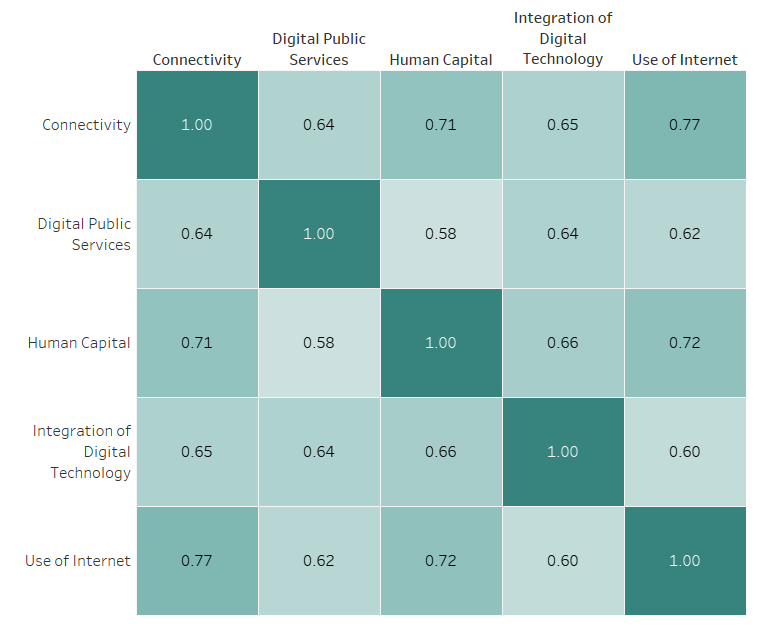
The diagonal values equal i, considering each measure has a perfect linear correlation with itself. The matrix is essentially mirrored from bottom left to top right as the measures are correlated in both directions. To illustrate how to make this with an example, I'll utilize the DESI Makeover Monday dataset, which is available hither. Firstly, connect to that dataset in Tableau.
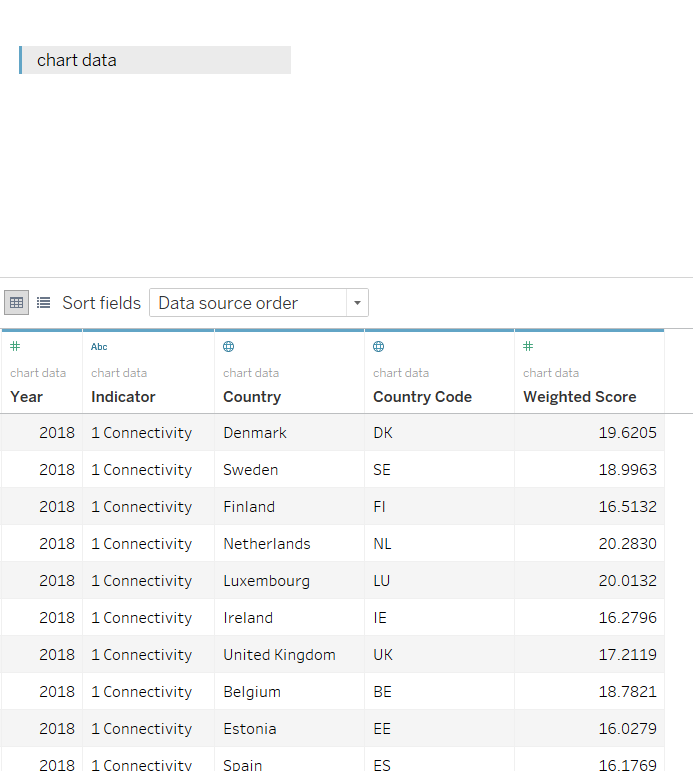
Our objective is to visualise the correlation strengths between the Weighted Scores of each DESI Indicator. At start I thought the manner to do this would be to put Indicator in the Rows and Columns shelf, and fill the cells with Pearson'sr computed in a calculated field. But no. Look what Tableau does:

It merely lets united states of america fill up the diagonals, which reflects the i-to-1 mapping of each level of Indicator to itself. What we really want is to map each level of Indicator to every other level of Indicator. To achieve this, nosotros need to indistinguishable the dataset and join them together.
In the Information Source pane, bring together a 2nd copy of the dataset back onto itself with an inner join. At present, nosotros need to make up one's mind what fields to join on. Primarily, we desire to join on the field that represents the highest granularity of our data: Land. Since we accept data for the years 2014-2018, nosotros can also join on year to summate the correlations betwixt Indicators for each twelvemonth.
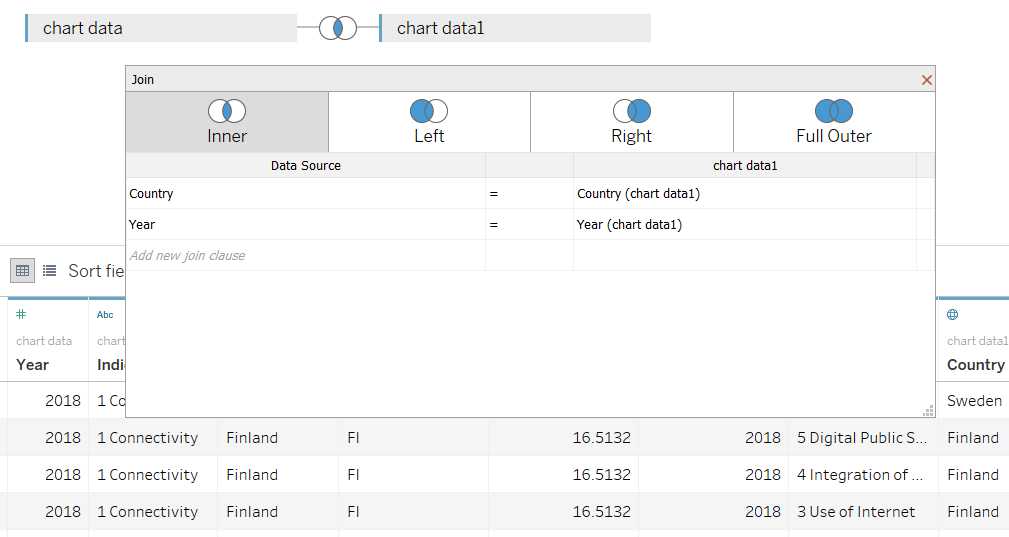
Next up we need to make a calculated field to compute the bodily correlations. Tableau can compute Pearson'srusing the CORR() function, simply a couple of LODs are necessary to construct the correct input values:
CORR(
{ Fixed [Indicator],[Land],[Year] : SUM( [Weighted Score])}
,
{ Stock-still [Indicator (nautical chart data1)],[Land (nautical chart data1)],[Twelvemonth (chart data1)] : SUM( [Weighted Score (chart data1)])}
)
At the core of this adding nosotros are correlating the original weighted scores ([Weighted Score]) with the joined weighted scores ( [Weighted Score (chart data1)]) using the CORR() office. In improver, nosotros're fixing the scores beyond the Indicator, Year and Land dimension levels, which volition be the dimensions in our view and filters.
The last pace is to build the viz. Indicator, and our copy of Indicator become in the Rows and Columns shelf. Drop the Correlation calc on color to fill up the cells. If you want, you tin can enable the labels from the toolbar. Filter by Year, and yous should get something similar this:
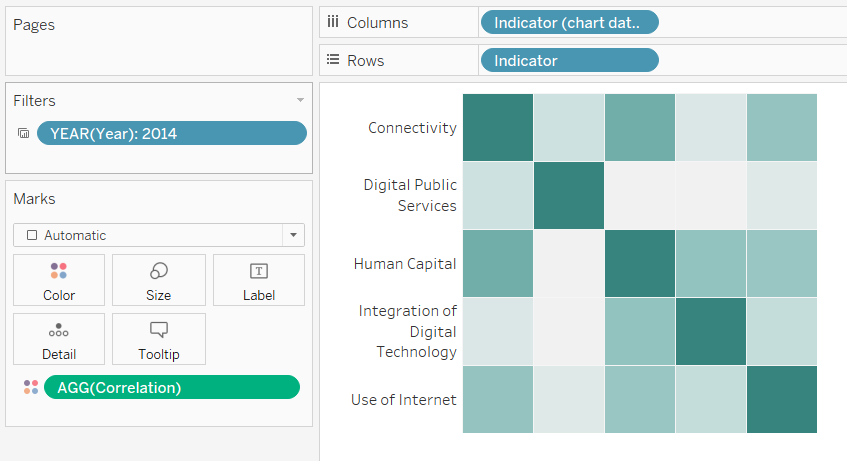
What I thought was really cool was the power to apply the cells of the correlation matrix to filter a scatter plot of those ii indicators, which yous could only as hands put in a tooltip.
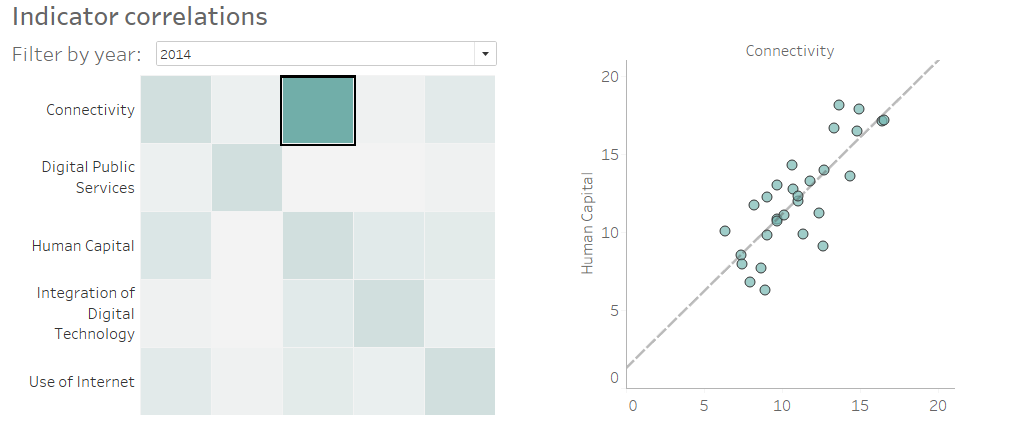
Source: https://www.thedataschool.co.uk/brian-scally/how-to-make-a-correlation-matrix-in-tableau
Posted by: beckempting2000.blogspot.com


0 Response to "How To Find Correlation In Tableau"
Post a Comment